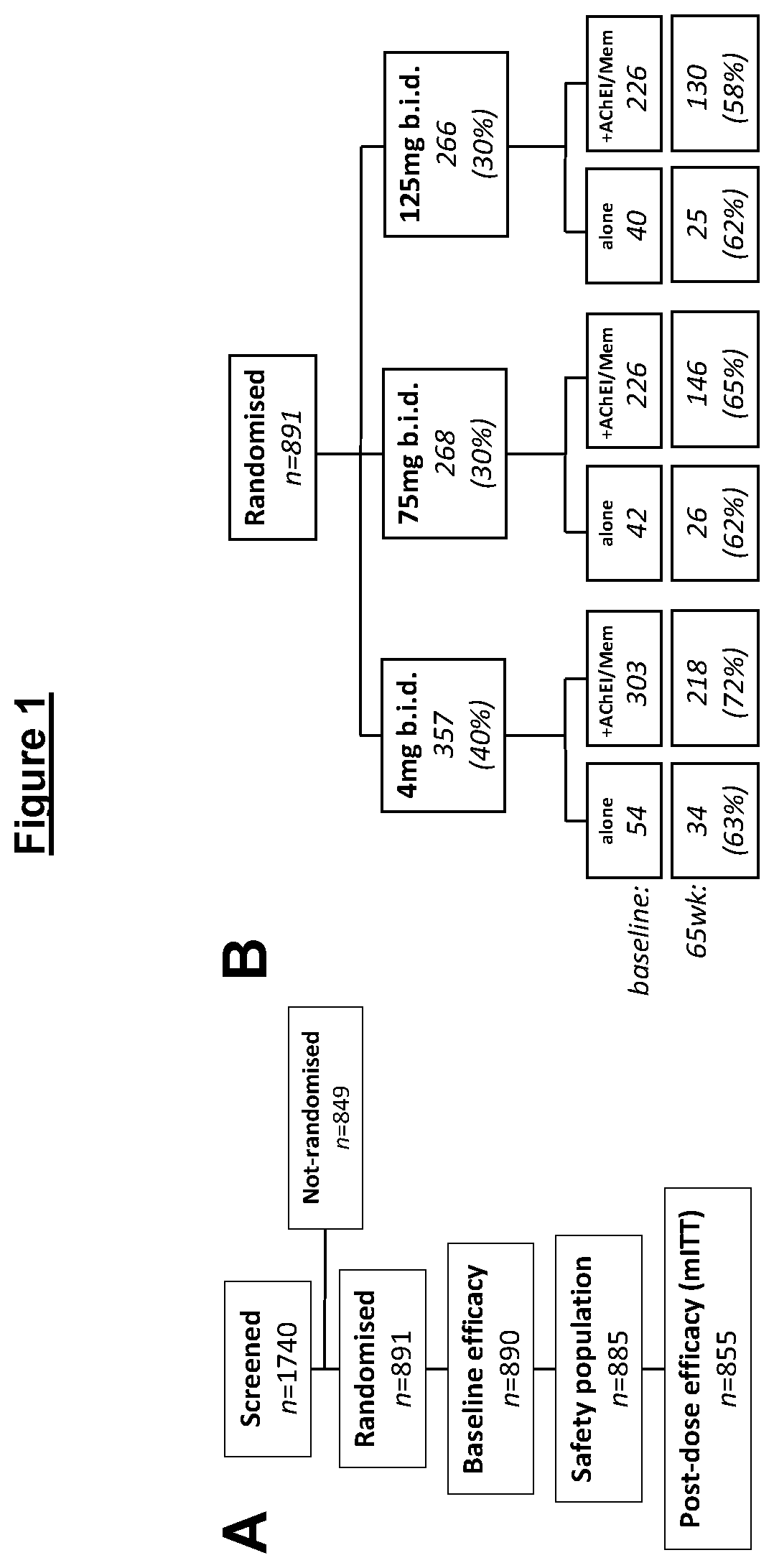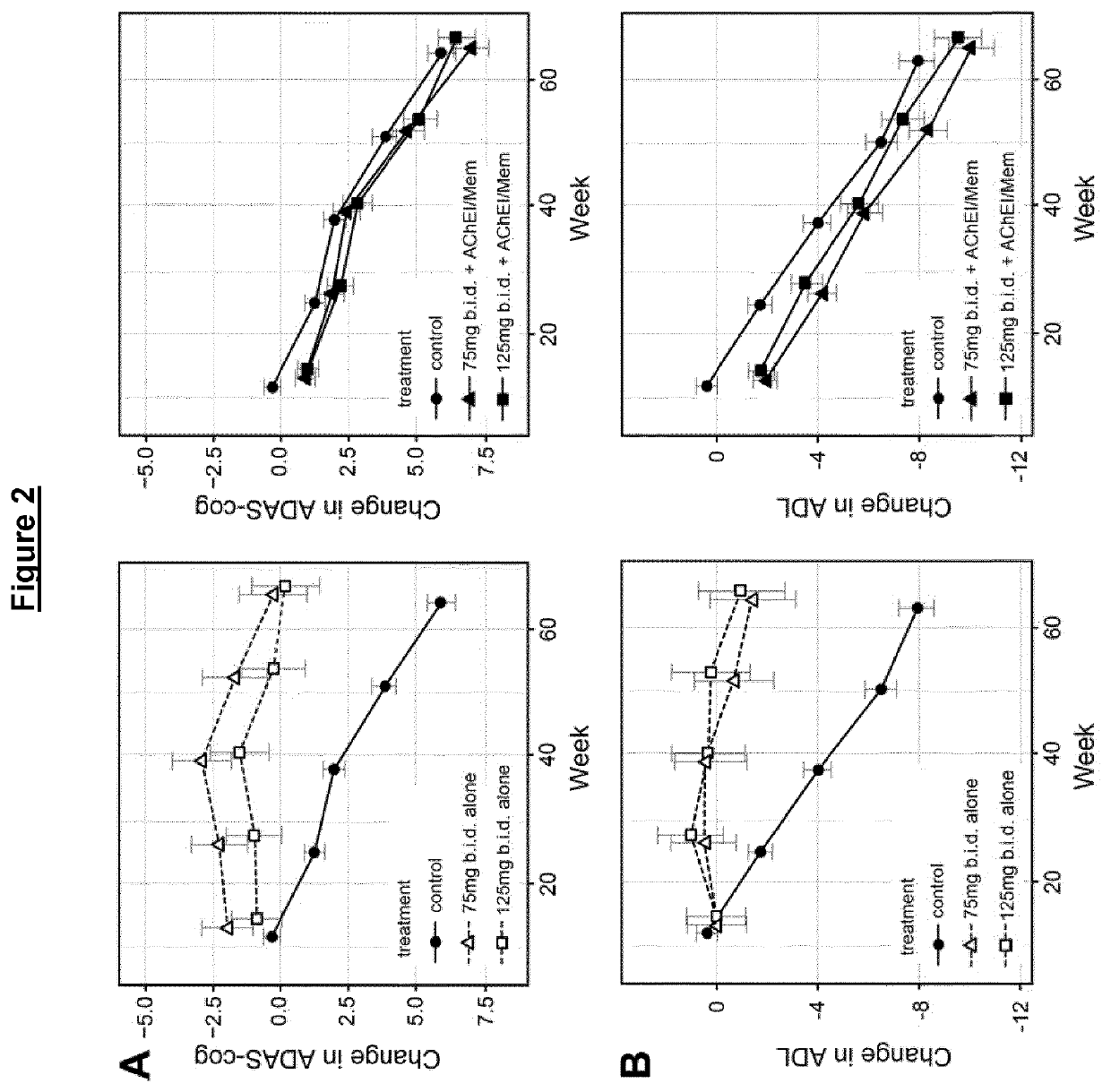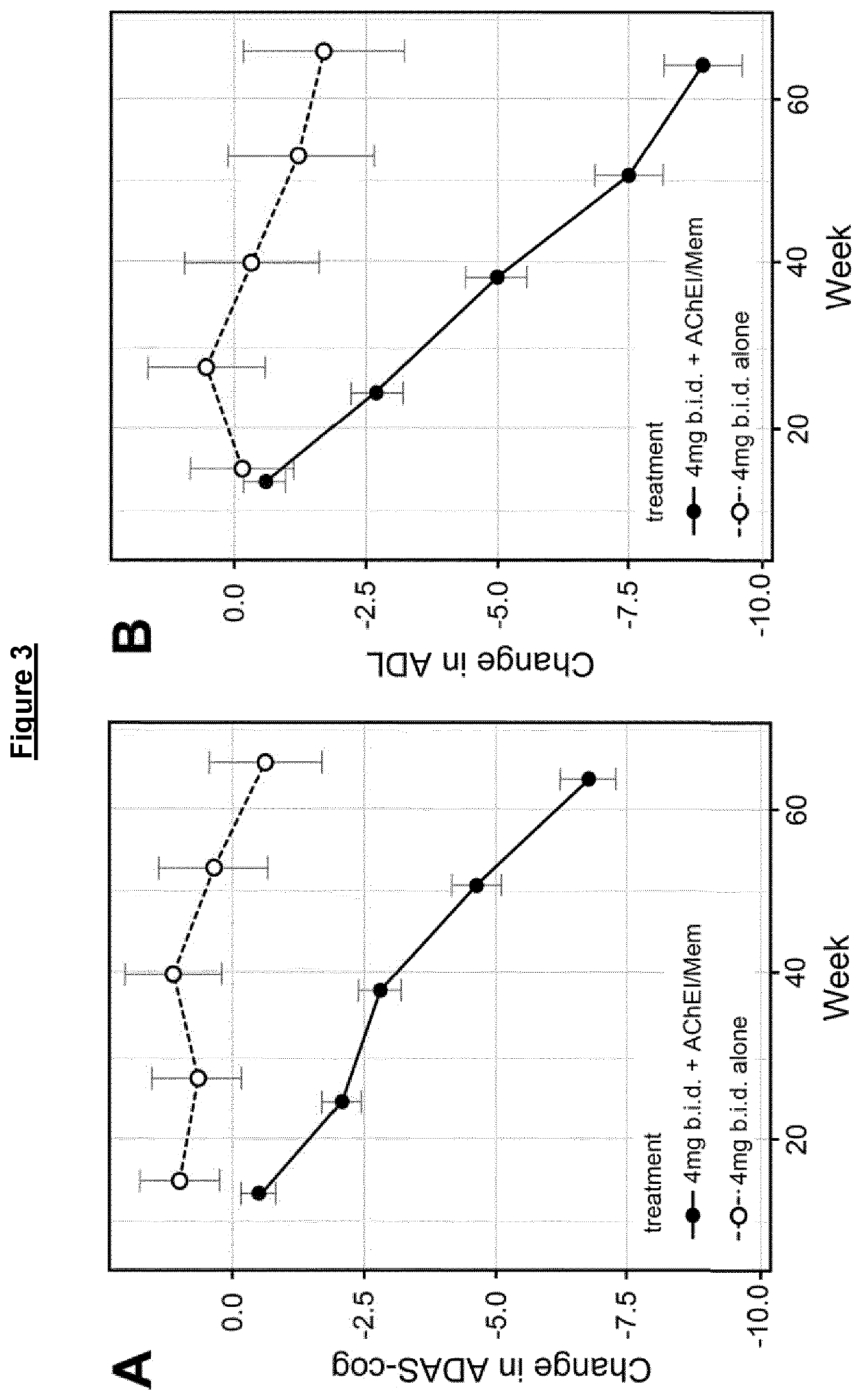Administration and dosage of diaminophenothiazines
a technology of diaminophenothiazines and diaminophenothiazines, which is applied in the direction of drug compositions, food shaping, metabolic disorders, etc., can solve the problems of limited capacity for mt uptake and distribution, and achieve the effects of improving the light stability of the dosage form, and reducing the risk of side effects
- Summary
- Abstract
- Description
- Claims
- Application Information
AI Technical Summary
Benefits of technology
Problems solved by technology
Method used
Image
Examples
example 1
Provision of MT-Containing Compounds
[0401]Methods for the chemical synthesis of the MT-containing compounds described herein are known in the art. For example:
[0402]Synthesis of compounds 1 to 7 can be performed according to the methods described in WO2012 / 107706, or methods analogous to those.
[0403]Synthesis of compound 8 can be performed according to the methods described in
[0404]WO2007 / 110627, or a method analogous to those.
[0405]Synthesis of compound 9 (MTC) is well known in the art. Examples syntheses of highly pure MTC are provided in WO2006 / 032879 and WO2008 / 007074.
[0406]Synthesis of compounds 10 to 13 can be performed according to the methods described in WO2007 / 110630, or methods analogous to those.
example 2
Formulation of MT-Containing Compounds
[0407]Methods for the chemical synthesis of the MT-containing compounds described herein are known in the art. Example methods using dry compression, for example, are provided in WO2012 / 072977.
example 3
Phase 3 Clinical Trial in Mild to Moderate AD
Methods
Outcomes and Measures
[0408]The co-primary efficacy outcomes were change from baseline in 11-item Alzheimer's Disease Assessment Scale—cognitive subscale (ADAS-cog) and the 23-item Alzheimer's Disease Cooperative Study Activities of Daily Living (ADCS-ADL). Magnetic resonance imaging (MRI) volumetry was chosen as the principal secondary outcome to support a potential effect on the rate of brain atrophy (Fox et al., 1997; Ridha et al., 2008). Change in Lateral Ventricular Volume (LVV), as measured by the Ventricular Boundary Shift Integral (VBSI), (Salloway et al., 2014) was chosen as the principal measure as it provides high-contrast boundaries for measurement and is less affected by motion artefacts than whole brain or smaller structures. Key supportive topographical measures (temporo-parietal (TPV) and hippocampal volume (HV)) are also reported.
Patients
[0409]Patients were recruited at 115 sites across 16 countries between January ...
PUM
| Property | Measurement | Unit |
|---|---|---|
| weight | aaaaa | aaaaa |
| weight | aaaaa | aaaaa |
| weight | aaaaa | aaaaa |
Abstract
Description
Claims
Application Information
 Login to View More
Login to View More - R&D
- Intellectual Property
- Life Sciences
- Materials
- Tech Scout
- Unparalleled Data Quality
- Higher Quality Content
- 60% Fewer Hallucinations
Browse by: Latest US Patents, China's latest patents, Technical Efficacy Thesaurus, Application Domain, Technology Topic, Popular Technical Reports.
© 2025 PatSnap. All rights reserved.Legal|Privacy policy|Modern Slavery Act Transparency Statement|Sitemap|About US| Contact US: help@patsnap.com



